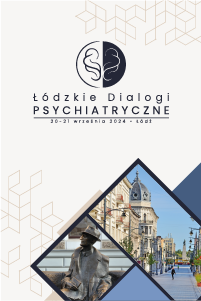Variants of the verbal fluency test in the diagnosis of dementia – does the selection of letters matter?
Monika Ponichtera-Kasprzykowska1, Tomasz Sobów2, Jakub Kaźmierski3
 Affiliacja i adres do korespondencji
Affiliacja i adres do korespondencjiAim: Verbal fluency test (VFT) is a simple tool used to diagnose language functions. Verbal fluency assessment is often used in the detection of cognitive disorders in people from various clinical groups, including patients with dementia syndromes. In clinical practice, various VFT variants are used, even within one language area. The aim of our own research was to assess the usefulness of VFT variants in Poland in the neuropsychological diagnosis of dementia. Material and methods: The study involved 60 people diagnosed with dementia in Alzheimer’s disease and a total of 80 people from the control group (in two age groups: 30–60 years and 65–90 years). Three phonetic variants of the test were applied: FAS, KPM, WZL as well as two semantic variants: Animals and Sharp Objects. The analysis covered the level of test performance by the respondents (the number of correctly updated words in each of the 11 separate categories) and the diagnostic values of the tool’s individual variants. Results: People diagnosed with dementia have worse results than healthy people in all tasks related to verbal fluency. Between the components of the VFT (11 categories) there are no statistically significant differences (p = 0.500) within the studied groups. Each of the 11 elements of VFT differentiates a person diagnosed with dementia from people without a recognised disorder to a highly statistically significant degree (p < 0.001). Conclusions: The applied VFT variant has no impact on the diagnostic values of the tool in people aged 65–90. The results of the study confirm the high usefulness of VFT in the neuropsychological diagnosis of dementia.















